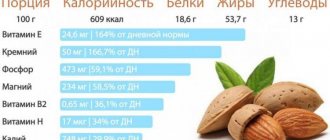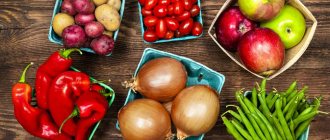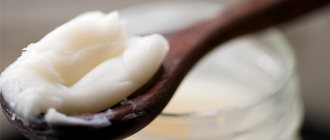According to the results of the study, low-carb foods promote weight loss. When the level of carbohydrates decreases, the body starts the process of burning fat. However, we are talking about slow carbohydrates. In the process of breaking them down into monosaccharides, the level of glucose in the blood increases gradually, and then also gradually decreases, which helps you not feel hungry longer.
But fast carbohydrates are processed instantly, breaking down into glucose and fructose, while the body feels full due to a jump in blood sugar. But after breakdown, these carbohydrates are transformed into fat.
Dairy
Dairy products are rich in protein, potassium, amino acids and vitamins necessary for the body. They contain calcium and phosphorus, which are responsible for the strength of bones and teeth, as well as prebiotics and beneficial lactobacilli, which improve intestinal microflora and the functioning of the gastrointestinal tract.
However, you should buy only natural, organic dairy products without adding preservatives, colors or sweeteners.
Beneficial features
Since ancient times, people began to add cereals (derivatives of various grain crops) to their diet. The Greeks and Romans served barley, and in Rus' at that time it was customary to eat oats and millet. Then people intuitively understood that porridge was the easiest way to get enough food and regain strength and energy.
Cereals have unique properties and nutritional value. Typically, per 100 g of porridge there is:
- 50 kcal;
- carbohydrates – 11 g;
- proteins – 1.4 g;
- fats - 0.2 g;
- potassium – 16 mg;
- sodium – 6 mg;
- calcium – 87 mg;
- magnesium – 5 mg;
- iron – 3.7 mg.
Carbohydrates are the basis for the functioning of our body, the main source of energy for our cells. However, carbohydrates are different. Fast carbohydrates, which are found in large quantities in flour, sweets, and fruits, are the main cause of excess weight. They are quickly processed by our body, depositing extra centimeters on the hips. Slow carbohydrates are the most useful and necessary for humans, because the cells receive proper nutrition, but we do not gain weight. And these are the carbohydrates that are contained in porridges.
Porridges are also useful because:
- they contain many microelements and vitamins that ensure the beauty and health of our body;
- the consistency of the porridge has a positive effect on the functioning of the gastrointestinal system, enveloping the walls of the stomach, protecting them from mechanical irritation by other products;
- strengthen the immune system;
- rejuvenate the body;
- remove toxins and waste from the body;
- reduce the risk of developing cancer by 20%.
Nowadays, the range of porridges is extensive. Almost everyone can choose a variety that they like. However, it is worth understanding that each porridge has its own unique properties, the severity of which will also depend on the method of preparation.
Video: The benefits of porridge for the body!
https://youtu.be/WK57dKSLVV8
Vegetables and fruits
One of the important components of the body's defense system is antioxidants, which can be obtained from vegetables and fruits - these are fat-soluble vitamins A, C and E.
The most vitamin C is found in lemons, kiwi, apples, oranges, bell peppers, onions and cabbage. It supports the functioning of the immune and circulatory systems, helps the body absorb iron.
How to choose baby food for weight gain - advice from experts and trainers on the correct selection of supplements for weight gainProtein shake at home - step-by-step instructions on how to prepare cocktails for weight loss and weight gain (105 photos)
Vitamin salad at home: simple recipes, benefits and harms of vitamin salads (105 photos and videos)
Vitamin A is found in carrots, spinach, tomatoes and apricots. It affects visual acuity, ensures smoothness and cleanliness of the skin, elasticity of blood vessels, and prevents the penetration of infections through the mucous membranes of the body.
Vitamin E is rich in foods such as celery, asparagus and broccoli. It has an anti-carcinogenic effect, supports the functioning of the reproductive system and prevents the formation of blood clots.
Vegetables and fruits are enriched with fiber, potassium, B vitamins, mineral salts and phytonutrients that protect the body from the negative influence of the environment.
Top 10 Low Carb Fruits and Berries
In the list below, low-carb berries and fruits preferred on the keto diet are listed at the top.
1. Raspberries - half a cup (60 g) - 3 g carbohydrates.
2. Blackberries - half a cup (70 g) - 4 g.
3. Strawberries – eight medium-sized berries (100 g) – 6 g.
4. Plum (65 g) – 7 g.
5. Clementine – (75 g) – 8 g carbohydrates.
6. Kiwi – (70 g) – 8 g.
7. Cherries - half a cup (75 g or 12 cherries) - 8 g.
8. Blueberries - half a cup (75 g) - 9 g.
9. Melon (cantaloupe) – one slice (160 g) – 11 g.
10. Peach – one medium fruit (150 grams) – 13 g.
For comparison, a large orange has 17 grams of carbohydrates, a medium-sized apple has about 21 grams, and a banana has about 24 grams.
Low Carb Nuts and Seeds
Nuts are a storehouse of fiber, proteins and fats, but they do not contain many carbohydrates, which makes it possible to include this product in the diet of those who are watching their weight.
They contain magnesium, calcium, iodine, iron, copper, vitamins C and E, as well as omega-3 fatty acids. Nuts are recommended for consumption by people with weak immunity, urolithiasis and anemia.
The seeds also contain many useful substances. Sunflower seeds are rich in vitamins A and E, flax seeds can be consumed for diabetes and heart disease, and sesame seeds can help remove toxins.
Start a low carb diet
Eat quality, minimally processed, natural, low-carb foods. Buy produce at local farmers' markets. Does the product have no ingredients? Great. This means that the product has not been processed.
A good choice is to eat only low-carb foods, which have been around for decades. If the product contains a long list of ingredients and words that you are seeing for the first time, do not consume the product.
How much should you limit carbohydrates?
How many grams of carbohydrates can you eat per day and still be on a low-carb diet? Many people on the Standard American Diet (SAD) consume 250 to 350 grams of carbohydrates per day. When you start any low-carb diet that limits your carbohydrate intake to less than 100 grams per day, you begin to lose weight and your metabolic processes normalize. The effect is especially noticeable when you eliminate hidden added sugars from your diet.
However, the more pounds you want to lose, the fewer carbohydrates you should eat when starting a low-carb, high-fat diet. If you eat less than 20 grams of carbohydrates per day, you will be on a low-carb or ketogenic diet, in which your body switches from carbohydrates (glucose) to burning fats (ketone bodies) for energy.
Ketogenic diets can also suppress your appetite, so you'll end up eating less without feeling hungry.
Some people do better by consuming slightly more carbohydrates—about 30 to 50 grams per day—as long as they come from healthy, unprocessed, low-carb foods and do not contain added sugars or refined carbohydrates. Once people reach their goals of losing a certain amount of weight or improving their health, they can add some carbohydrates back into their diet.
You will have to experiment to find out when you feel best and in what mode you can easily maintain your weight at your desired level and control your hunger. Many people find that if they increase the amount of carbohydrates in their diet, cravings for foods that are rich in carbohydrates return.
Below you will find three clear examples of the different carbohydrate contents on a dinner plate. Learn more about how many carbohydrates you need on a low-carb diet.
| Ketogenic diet – up to 20 grams of carbohydrates per day | Moderate low-carb diet – 20 – 50 grams of carbohydrates per day | Liberal low-carb diet – 50 – 100 grams of carbohydrates per day |
Important: Low carbohydrate but HIGH FAT diet
For many years we have been told to avoid fat and eat only low-fat foods. Because of this, the hardest part of the diet for many is adding large amounts of fat to the diet. A low-carb diet should be rich in fat. Get them from butter, coconut oil, high-fat cheese, olive oil, avocados, fatty beef and bacon. Here are some simple tips.
Like a car engine, the body can use two types of fuel for its energy needs. 1) glucose obtained as a result of the breakdown of carbohydrates, 2) fats. When you stop eating a lot of carbohydrates, your body switches to burning fat. It will either burn fat from food or fat from fat deposits on your body, such as belly fat, thighs, or buttocks.
The body will switch to using fats as primary fuel only when carbohydrate reserves are low. The diet is called low-carbohydrate, high-fat (LCHF).
At the beginning of the diet, do not deny yourself fats. Eat enough to keep you full and not hungry. This way, you will soon adapt and become efficient at burning fat for energy. You'll know you've adapted when you no longer feel the need to eat every few hours and no longer experience spikes and drops in your blood sugar.
Once your body has adapted to consuming enough fat, you can begin to reduce the amount of fat at each meal and put your body into a mode of burning its own body fat. This will help you lose weight. If you feel your hunger increasing, increase your fat intake again. Listen to your body. Eating more fat than you need will slow down your weight loss. If you eat too little fat, you may feel tired, depressed and hungry. Your body will tell you what it needs. Learn to listen to his prompts.
In short, eat as much fat and low-carb food as you need to feel satisfied. No need to count calories. Eat when you are hungry. Stop eating as soon as you feel full. Read our guide to learn how a low-carb diet can help you lose weight.
Eggs
Eggs, as a low-carb product, are worth mentioning separately. Egg white is a source of amino acids, and the yolk contains iron, phosphorus, selenium, fat-soluble vitamins and B vitamins.
- How to take glutamine - calculation of dosage, time of administration and instructions on how to properly use sports supplements in sports (115 photos)
What foods contain gluten - a list of the richest and most unobvious foods containing gluten + 125 photos
- Casein - rules of administration, benefits, harm and instructions for use. Reviews and reviews of the best manufacturers
1 egg can compensate up to 14% of the daily protein requirement, and egg white is well absorbed by the body.
Meat products
In meat, the amount of carbohydrates is almost zero. Meat products are the main source of proteins from which muscle cells are built and amino acids that affect brain development.
Chicken meat contains B vitamins and beneficial microelements that help strengthen the nervous system, condition of nails, hair and get rid of excess weight. Beef and lamb have similar properties, however, they contain much more iron, so this meat is indispensable for people with anemia.
But turkey meat is in first place in terms of iron, potassium, calcium and sodium content. Moreover, all the elements in it are well balanced and are absorbed by the body much faster.
Pork contains zinc, which is necessary for the functioning of the immune system, and selenium, which synthesizes thyroid hormones.Oatmeal - a traditional English dish
Oatmeal is the result of processing oats. It is widespread in different countries, but it is the British who traditionally prepare oatmeal for breakfast. This tradition is an excellent example of healthy eating. Slow carbohydrates in the morning will help “wake up” the body, fill it with energy and strength, maintaining beauty and slimness. In oatmeal you can find:
- carbohydrates – 15 g;
- proteins – 3 g;
- fats – 1.7 g;
- iron;
- calcium;
- potassium;
- sodium;
- phosphorus;
- zinc;
- B vitamins;
- vitamins E, K.
Thanks to this composition, this porridge has unique properties:
- Pronounced antioxidant effect.
- Stabilization of metabolism.
- Cleanses the gastrointestinal tract from waste and toxins.
- Reduces cholesterol levels.
- Prevents the formation of atherosclerotic plaques.
- Allows you to improve the condition of the skin, hair, and nails.
- Supports the performance of all organs and systems.
- Strengthens the immune system.
Oatmeal can be cooked in water or milk, supplemented with fruits, berries, nuts or honey. A simple porridge can be turned into a real masterpiece that will not only support the body’s performance, but also lift your spirits. Don't be afraid to experiment! Prepare salted oatmeal by adding some meat or cheese to it.
Seafood
Fish is also rich in protein, but does not contain carbohydrates. When consumed, the body receives enough nutrients. However, the main difference is that seafood is enriched with fatty acids necessary for the cardiovascular system.
Even fatty fish does not contribute to weight gain, which is why this product is so popular among people seeking healthy nutrition.
Vegetable and animal oils
These products are practically carbohydrate-free. Natural butter is rich in vitamins A, C, E and D, as well as fatty acids.
Among vegetable oils, it is better to choose unrefined ones, because they are absorbed faster by the body. Sunflower oil does not contain cholesterol, and olive oil is an excellent choleretic agent.
Flaxseed oil contains vitamins A, E and F, it has a bactericidal and anti-inflammatory effect. Coconut oil contains hyaluronic acid, which is essential for the skin.
Low carb drinks
If a person strives for proper nutrition and weight loss, he should drink more water, because it helps dissolve fat, cleanses the kidneys and liver, and helps remove toxins from the body.
Herbal tea has healing properties, and leaf tea helps burn fat. Coffee is one of the best sources of antioxidants, but it is better to drink black coffee.
Conclusions about fruits and berries on keto
Overall, don't worry if you want to indulge in fruit while on a keto diet. They have much more nutritional value than processed carbohydrate sources and, in moderation, will not have much of a negative impact on fat burning.
Use fruits not as a main dish or frequent snack, but as small additions, “condiments”, etc. For example, they can be a great addition to salads to add more color and flavor, or you can make sugar-free, low-carb jams and preserves.
Benefits of a Low Carb Diet
Let's summarize the above information and highlight the main benefits of a low-carb diet:
- Foods rich in protein and fat are digested more slowly and saturate the body better.
- The low-carb diet is very varied.
- The essence of the diet is to give up unhealthy carbohydrates, without counting the caloric content of food.
- This diet helps stabilize blood glucose levels, which is especially important for diabetics.
- The balance of hormones improves, which helps normalize sleep, increases muscle endurance and ensures the normal functioning of all body systems.
How much fruit can you have on a low carb diet?
It's better to eat berries on a keto diet. Vegetables can provide every nutrient found in fruits with virtually no added sugar. Therefore, diversify your diet with vegetables on a keto diet.
Even on a more moderate low-carbohydrate diet (20-50 g per day), you will have to be careful - eat no more than one fruit per day.
On a liberal low-carb diet (50-100 grams per day), you can allow two to three fruits per day if that is your largest source of carbohydrates.
The most carbohydrates are found in grapes and bananas. They can be consumed on a keto diet, but with caution. Try our keto banana muffins recipe.











